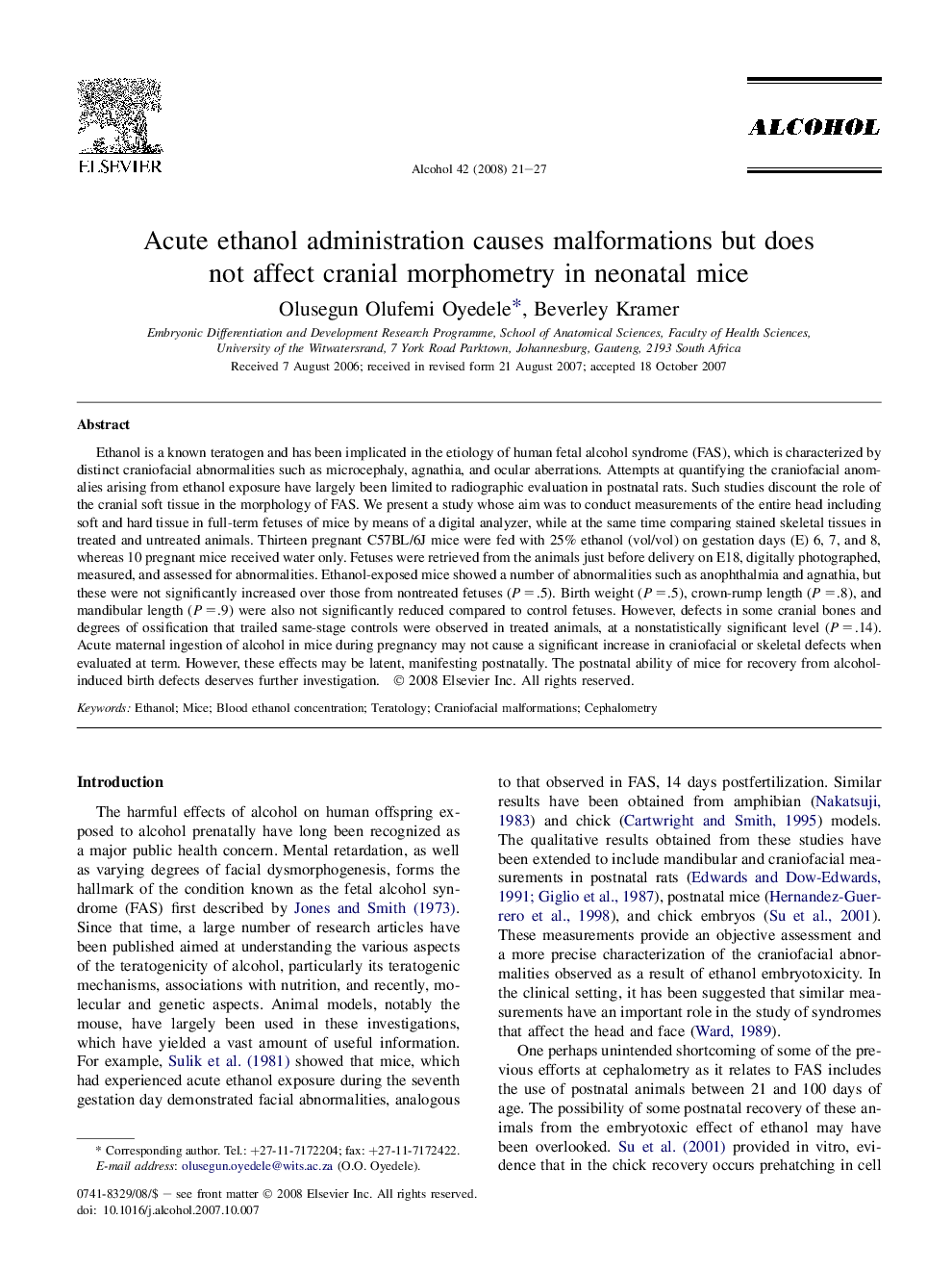| کد مقاله | کد نشریه | سال انتشار | مقاله انگلیسی | نسخه تمام متن |
|---|---|---|---|---|
| 1067912 | 948950 | 2008 | 7 صفحه PDF | دانلود رایگان |
عنوان انگلیسی مقاله ISI
Acute ethanol administration causes malformations but does not affect cranial morphometry in neonatal mice
دانلود مقاله + سفارش ترجمه
دانلود مقاله ISI انگلیسی
رایگان برای ایرانیان
کلمات کلیدی
موضوعات مرتبط
علوم زیستی و بیوفناوری
بیوشیمی، ژنتیک و زیست شناسی مولکولی
زیست شیمی
پیش نمایش صفحه اول مقاله

چکیده انگلیسی
Ethanol is a known teratogen and has been implicated in the etiology of human fetal alcohol syndrome (FAS), which is characterized by distinct craniofacial abnormalities such as microcephaly, agnathia, and ocular aberrations. Attempts at quantifying the craniofacial anomalies arising from ethanol exposure have largely been limited to radiographic evaluation in postnatal rats. Such studies discount the role of the cranial soft tissue in the morphology of FAS. We present a study whose aim was to conduct measurements of the entire head including soft and hard tissue in full-term fetuses of mice by means of a digital analyzer, while at the same time comparing stained skeletal tissues in treated and untreated animals. Thirteen pregnant C57BL/6J mice were fed with 25% ethanol (vol/vol) on gestation days (E) 6, 7, and 8, whereas 10 pregnant mice received water only. Fetuses were retrieved from the animals just before delivery on E18, digitally photographed, measured, and assessed for abnormalities. Ethanol-exposed mice showed a number of abnormalities such as anophthalmia and agnathia, but these were not significantly increased over those from nontreated fetuses (PÂ =Â .5). Birth weight (PÂ =Â .5), crown-rump length (PÂ =Â .8), and mandibular length (PÂ =Â .9) were also not significantly reduced compared to control fetuses. However, defects in some cranial bones and degrees of ossification that trailed same-stage controls were observed in treated animals, at a nonstatistically significant level (PÂ =Â .14). Acute maternal ingestion of alcohol in mice during pregnancy may not cause a significant increase in craniofacial or skeletal defects when evaluated at term. However, these effects may be latent, manifesting postnatally. The postnatal ability of mice for recovery from alcohol-induced birth defects deserves further investigation.
ناشر
Database: Elsevier - ScienceDirect (ساینس دایرکت)
Journal: Alcohol - Volume 42, Issue 1, February 2008, Pages 21-27
Journal: Alcohol - Volume 42, Issue 1, February 2008, Pages 21-27
نویسندگان
Olusegun Olufemi Oyedele, Beverley Kramer,